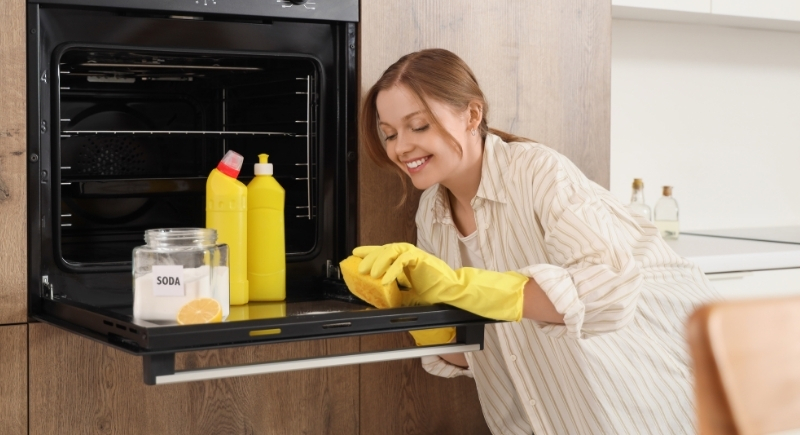Why You Should Never Use the “Self-Cleaning” Feature on Your Oven
Many people assume the self-cleaning feature on their oven is an easy shortcut. In reality, it’s one of the most misunderstood functions in the kitchen. The cycle reaches extremely high temperatures that can leave your kitchen smoky, hot, and sometimes harder to breathe in than expected.
The idea sounds great on paper: the oven locks itself, heats to almost 900°F, and turns all the food residue into ash. However, this is one of those cases where convenience comes with a catch, and that catch can put serious strain on your oven’s components if it’s overused or not properly ventilated.
The Heat Is Brutal

Image via iStockphoto/bymuratdeniz
The self-cleaning cycle works by reaching extremely high temperatures to incinerate grime and residue. However, that kind of heat can also stress the oven’s wiring, door locks, or temperature sensors. Over time, the extreme heat may shorten the lifespan of these parts, especially if the cycle is run frequently or the oven is older. The heat itself rarely melts control panels or causes glass to shatter under normal conditions, but it can cause wear that leads to minor component issues after repeated use.
Older or heavily used ovens may be more vulnerable, as their internal parts have already undergone years of heating and cooling cycles. Consistent exposure to intense heat can cause some materials to become more fragile over time. While a single cleaning cycle is unlikely to cause immediate damage, repeated self-cleaning use can accelerate normal wear and tear inside the appliance.
The Smell Isn’t Just Annoying
Even if your oven survives the heat, the stench might make you regret hitting that button. When leftover grease and crumbs burn, they release thick smoke and strong odors. The air can get smoky enough to bother anyone with asthma or allergies, and it’s definitely unpleasant for pets. The smoke often lingers long after the cleaning cycle ends, clinging to curtains, furniture, and clothing.
If that’s not bad enough, you’ll also notice the kitchen feels hotter than usual for hours. Running the self-cleaning feature can raise the temperature around the oven, and since the cycle can last three to five hours, it uses a noticeable amount of electricity. For this reason, experts recommend ventilating the area by opening windows or running a fan whenever you use the feature.
Better Ways to Clean

Image via Canva/pixelshot
Thankfully, there are easier and safer ways to keep your oven clean without risking damage or filling your home with smoke. The best part is you probably already have what you need in your kitchen. A simple mix of baking soda and water works well for routine cleaning. Spread the paste on the oven’s interior, let it sit overnight, and wipe it clean in the morning. If you prefer, vinegar can also help remove residue and neutralize odors. It requires a little elbow grease, but it’s a practical and low-risk method for keeping your oven clean.
If you’re dealing with tough buildup, apply your cleaning mixture and let it sit for a longer period before scrubbing. There are also numerous natural cleaning sprays available that safely remove grime without the use of extreme heat or risk of damaging parts.